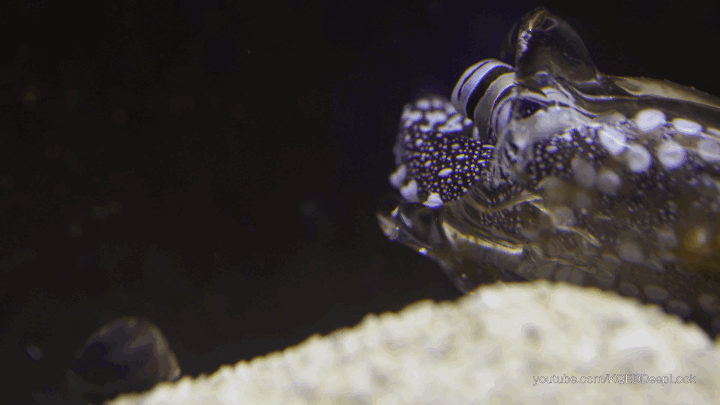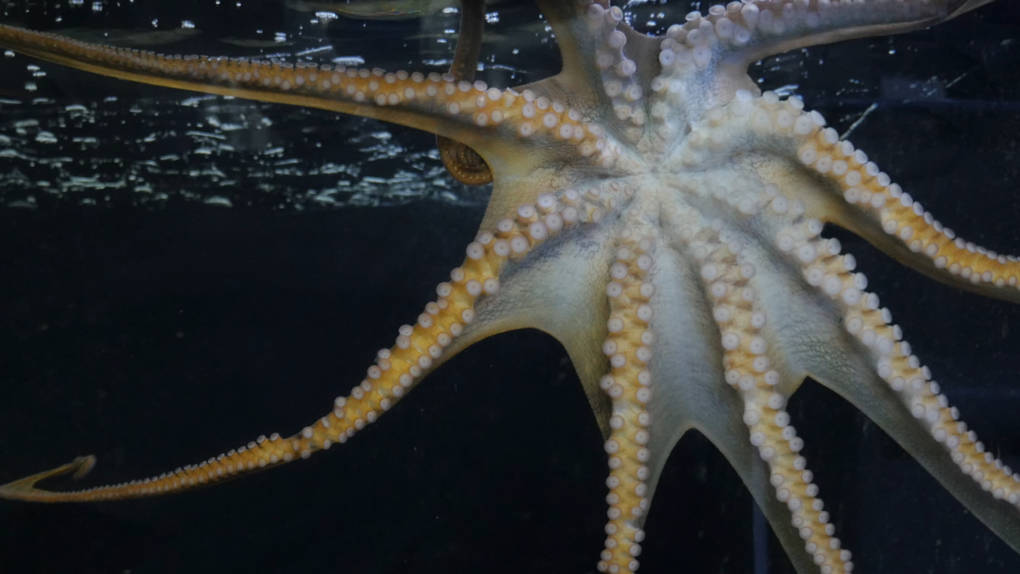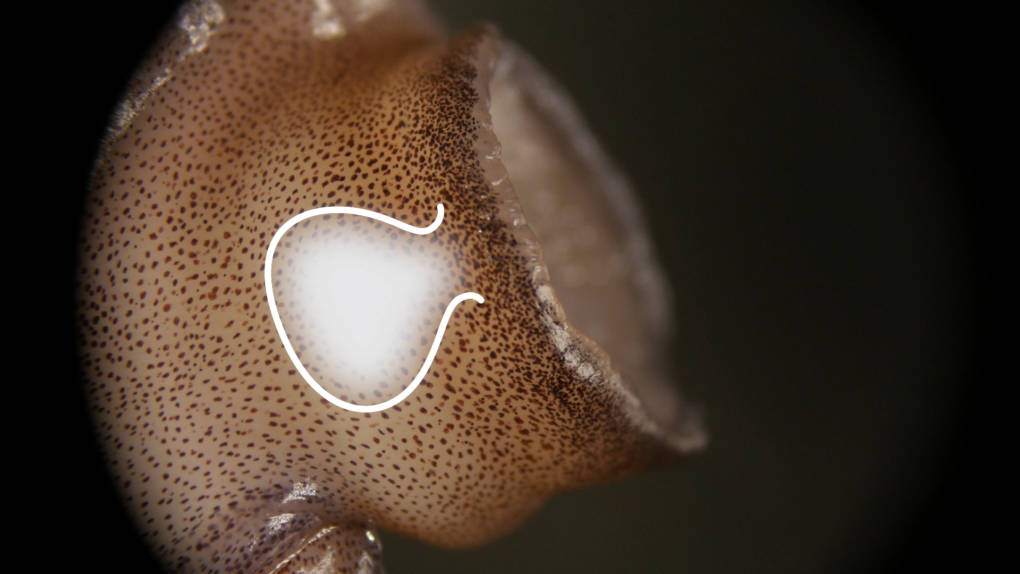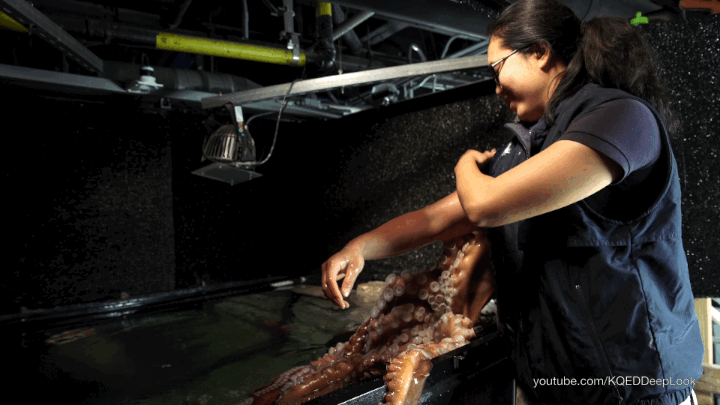If Your Hands Could Smell, You’d Be an Octopus
Everyone knows that an octopus has eight arms. And similar to our arms, it uses them to grab things and move around. But that’s where the similarities end. Hundreds of suckers on each octopus arm give them abilities people can only dream about.
At the Aquarium of the Bay in San Francisco, the Giant Pacific octopuses sometimes can be seen stretching out all eight arms at the same time. Each arm has up to 240 suckers running up and down its length.
“When there’s food in the water, and they’re ready for it,” said aquarist Alex Reiss, “they’ll have their arms stuck out like a flower, trying to get as much surface as possible.”
But the octopuses aren’t just using their arms to grab fish.
“The suckers are hands that also smell and taste,” said Rich Ross, senior biologist and octopus aquarist at the California Academy of Sciences across town. “They’re smelling the water with their suckers.”
Suckers are “very similar to our taste buds, from what little we know about them,” said University of North Carolina, Chapel Hill cephalopod biologist William Kier.

If these tasting, smelling suckers make you think of a human hand with a tongue and a nose stuck to it, that’s a good start to understanding just how differently octopuses are organized than humans. It all stems from the unique challenges an octopus faces as a result of having a flexible, soft body.
“This animal has no protection and is a wonderful meal because it’s all muscle,” said Kier.
So the octopus has adapted over time. It has about 500 million neurons (dogs have around 600 million), the cells that allow it to process and communicate information. And these neurons are distributed to make the most of its eight arms. An octopus’ central brain – located between its eyes – doesn’t control its every move. Instead, two thirds of the animal’s neurons are in its arms.
“It’s more efficient to put the nervous cells in the arm,” said neurobiologist Binyamin Hochner, of the Hebrew University of Jerusalem. “The arm is a brain of its own.”
This enables octopus arms to operate somewhat independently from the animal’s central brain. The central brain tells the arms in what direction and how fast to move, but the instructions on how to reach are embedded in each arm. Octopus arms can also work autonomously when they’re searching, like when they’re looking for food under a rock.
“The strange morphology of the octopus is part of an evolutionary process to enable highly complex behavior in a soft body,” said Hochner. “Everything developed in a different way to really enable the animal as a whole to create a rich behavior.”

Octopuses have also evolved mechanisms that allow their muscles to move without the use of a skeleton. This same muscle arrangement enables elephant trunks and mammals’ tongues to unfurl.
“The arrangement of the muscle in your tongue is similar to the arrangement in the octopus arm,” said Kier.
In an octopus arm, muscles are arranged in different directions. When one octopus muscle contracts, it’s able to stretch out again because other muscles oriented in a different direction offer resistance – just as the bones in vertebrate bodies do.

This skeleton of muscle, called a muscular hydrostat, is how an octopus gets its suckers to attach to different surfaces. Each sucker first creates a water-tight seal. Then the octopus contracts strong muscles to expand the sucker’s water-filled chamber. This lowers the pressure inside. The higher pressure outside pushes against the sucker and creates its powerful grip.

Octopus keepers at aquariums everywhere are intimately acquainted with that grip. At the Monterey Bay Aquarium recently, a reddish Giant Pacific octopus slid an arm outside its tank and wrapped it around aquarist Ellen Umeda’s arm.
“It’s a very unusual sensation. It feels like a bunch of suction cups slowly working up your arm,” said Umeda. As she carefully removed the arm, each sucker made a distinct sound, something like a loud slobbering kiss, and a line of red dots appeared on her arm.
“The hickies feel a little sore, like any other bruise,” she said. “This may sound painful, but the octopus’ curiosity and excitement make up for it.”
